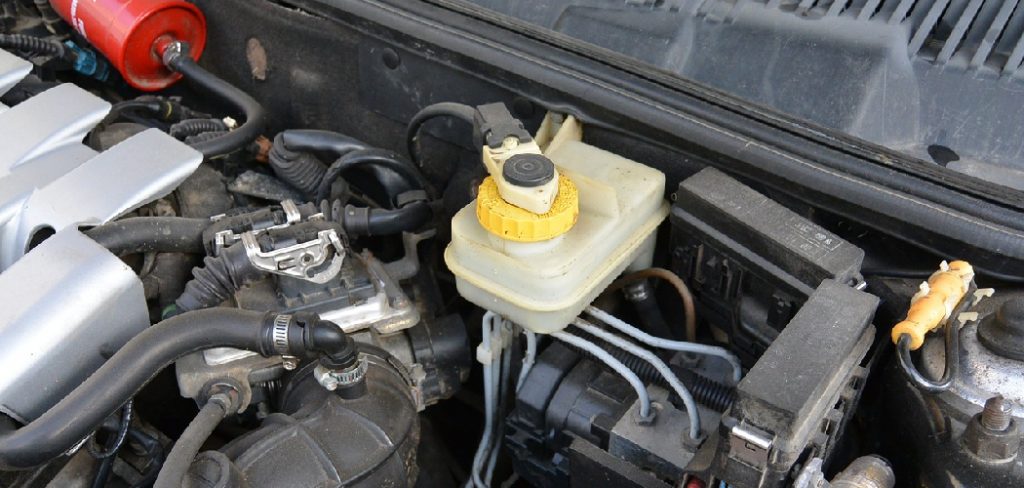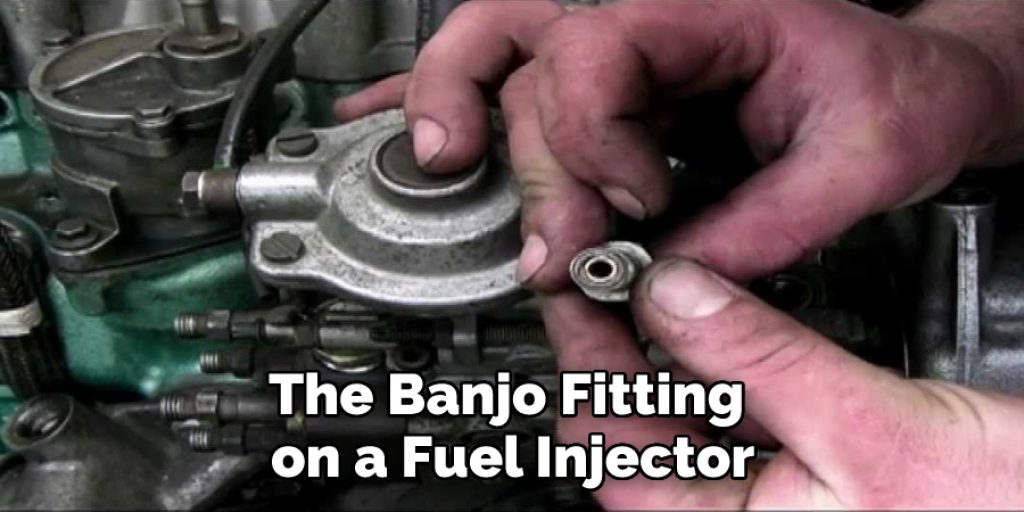You likely have a fuel injector leak if you’ve noticed that your car is leaking fuel. This can be caused by several factors, including age, wear, and tear, or damage. Fortunately, you can take steps to fix a leaking fuel injector.

Summary: Popcorn machines have a spinner wheel that needs to be fixed when it stops spinning. The most common cause is a broken belt, which can be replaced by removing the top of the machine and accessing the wheel. In some cases, the wheel may also need to be oiled or cleaned. Replacing the spinner wheel itself should do the trick if that doesn’t work.
What Causes Leaking Fuel Injector?
A leaking fuel injector is a sign of either an old or faulty one. As you drive, your engine’s vibrations can cause parts to grind together and wear out prematurely. This process can create narrow cracks in the injectors’ hard coating, letting minute amounts of gas seep through. However, you may not notice any change in performance because the amount of gas leaking through each crack is so small.
If your car’s engine makes a loud clicking or knocking noise when you step on the accelerator, it means that a faulty injector is causing the noise. Replacing the fuel injectors with new ones will solve the problem. If you don’t have any symptoms of a faulty injector, changing the fuel filters, cleaning the throttle body, and checking the wiring harness may fix your problem.
Step by Step Guide: How to Fix a Leaking Fuel Injector
Step 1: Gather Necessary Tools and Materials
Before beginning the repair process, gather the required tools and materials to ensure a smooth workflow. Some essential items include a wrench, a socket set, a fuel pressure gauge, a fuel injector puller, a fuel injector O-ring kit, a clean cloth, and safety gear such as gloves and goggles.
Step 2: Park the Vehicle and Turn Off the Engine
Park the vehicle on a level surface and turn off the engine. Allow the engine to cool down before starting any repair work to avoid burns and other injuries.
Step 3: Relieve Fuel Pressure
Put on your safety gear and locate the fuel pressure test port on the vehicle’s fuel rail. Connect the fuel pressure gauge to the test port and follow the manufacturer’s instructions to relieve the fuel pressure. This step is crucial for preventing fuel spills and accidents when working with the fuel injector.
Step 4: Disconnect the Battery
To prevent electrical shock, disconnect the negative battery cable before working on the fuel injector. This step also helps ensure that no electrical currents are flowing through the fuel injector while you work on it.
Step 5: Locate the Leaking Fuel Injector
Inspect the fuel injectors for any signs of leaks. Typically, a leaking fuel injector will have a strong gasoline smell, and you may see gasoline pooling around the base of the injector. You can also start the engine and observe the fuel injectors for any signs of fuel seepage. Once you’ve identified the leaking injector, turn off the engine before proceeding.
Step 6: Remove the Fuel Rail
Using a wrench or socket set, remove the bolts or nuts that secure the fuel rail to the engine. Carefully lift the fuel rail away from the engine, being cautious not to damage the injectors or their connections.
Step 7: Remove the Leaking Fuel Injector
Using a fuel injector puller or your hands, carefully remove the leaking fuel injector from the fuel rail. Be gentle to avoid damaging the injector or the surrounding components.
Step 8: Inspect the Fuel Injector
Examine the fuel injector for any signs of damage, such as cracks or broken seals. If the injector is damaged beyond repair, it will need to be replaced.
Step 9: Replace the O-Rings
If the fuel injector itself is not damaged, the leak may be due to worn or damaged O-rings. Remove the old O-rings from the injector and replace them with new ones from the fuel injector O-ring kit. Ensure that the O-rings are properly seated and lubricate them with a small amount of clean engine oil to make reinstallation easier.
Step 10: Reinstall the Fuel Injector
Carefully reinstall the fuel injector into the fuel rail, ensuring that it is properly seated and aligned. Double-check that the new O-rings are in place and that they create a secure seal between the injector and the fuel rail.
Step 11: Reattach the Fuel Rail
Place the fuel rail back onto the engine and secure it using the bolts or nuts that were removed earlier. Ensure that the fuel rail is properly aligned and that the injectors are correctly connected to their respective ports.
Step 12: Reconnect the Battery
Reattach the negative battery cable to complete the electrical circuit.
Step 13: Perform a Leak Test
Start the engine and observe the repaired fuel injector for any signs of leaks. If the leak persists, turn off the engine and reinspect the injector and its connections. You may need to repeat the repair process or consult a professional mechanic for further assistance.
Step 14: Dispose of Used Materials Responsibly
Dispose of any used materials, such as old O-rings and fuel-soaked cloths, in accordance with local regulations. Proper disposal is essential for environmental safety and to prevent potential hazards.
Step 15: Keep a Maintenance Schedule
To prevent future fuel injector issues, maintain a regular vehicle maintenance schedule. This includes changing the fuel filter at the recommended intervals, regularly checking the fuel system for signs of wear or damage, and using fuel injector cleaner as needed to keep the injectors functioning efficiently.
Step 16: Use High-Quality Fuel
Using high-quality fuel can help prolong the life of your fuel injectors and prevent issues such as clogs and leaks. Always purchase fuel from reputable gas stations and avoid using low-quality gasoline that may contain contaminants or impurities.
Step 17: Be Mindful of Symptoms
Pay attention to the symptoms that may indicate a fuel injector issue, such as poor engine performance, reduced fuel efficiency, or a strong gasoline smell. Addressing these issues promptly can help prevent further damage to the fuel system and other engine components.
Step 18: Consult a Professional Mechanic if Necessary
If you are unsure about your ability to fix a leaking fuel injector or if the issue persists after attempting the repair, consult a professional mechanic. They can accurately diagnose and repair the problem, ensuring the safety and efficiency of your vehicle.
You Can Check It Out to Fix a Soaker Hose
Tips to Prevent Leaks from Fuel Injector
1. While the engine is running, check to see if any fuel leaks occur.
2. Pull out the air cleaner and look inside the throttle body for any sign of fuel coming from the injectors. If there is fuel in/on it, at least one of your injectors has sprung a leak.
3. Check your oil. If there is fuel in your oil, it will cause hydrolock, resulting in severe engine damage.
4. The Fuel pressure regulator should always be replaced if the old one has failed or leaks because of a weak diaphragm or any other internal failure.
5. Do not overtighten the banjo bolt on the fuel injector attached to the intake manifold. Fuel pressure must be relieved from this area if the bolt is removed.
6. The banjo fitting on a fuel injector can develop a crack and spew fuel everywhere, causing a smokey exhaust and possible hydrolock. If so, replace the banjo fitting as soon as possible.

7. If you are dropping your fuel tank to replace the fuel pump, now would be a good time to check all of your injectors for leaks and change out the rubber hoses with new ones that will prevent future leaks problems.
You Can Check It Out To Fix a Stripped Gear Shifter
Conclusion
Fuel injectors are an important part of the engine and must be kept in good condition. A leaking fuel injector can cause several problems, including decreased fuel economy, loss of power, and even engine failure. In this blog post, we have discussed how to fix a leaking fuel injector.
Fuel injectors are responsible for delivering the correct amount of fuel into the engine’s cylinders. When they start to leak, it decreases fuel economy, but it can also lead to other problems such as misfiring spark plugs and excessive smoke from the exhaust pipe. We hope this blog post on how to fix a leaking fuel injector has been helpful. If you have any questions or want to know more, then feel free to comment below!
You Can Check It Out To Fix Exhaust Pipe Without Welding
